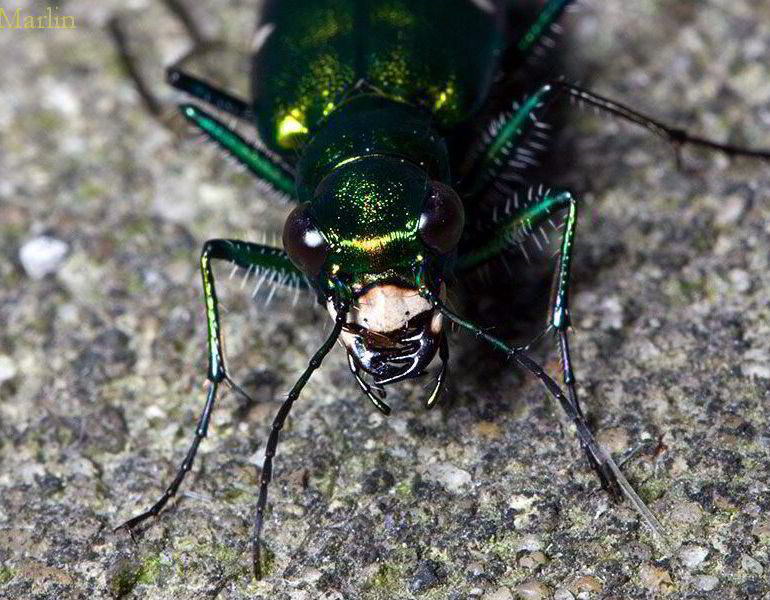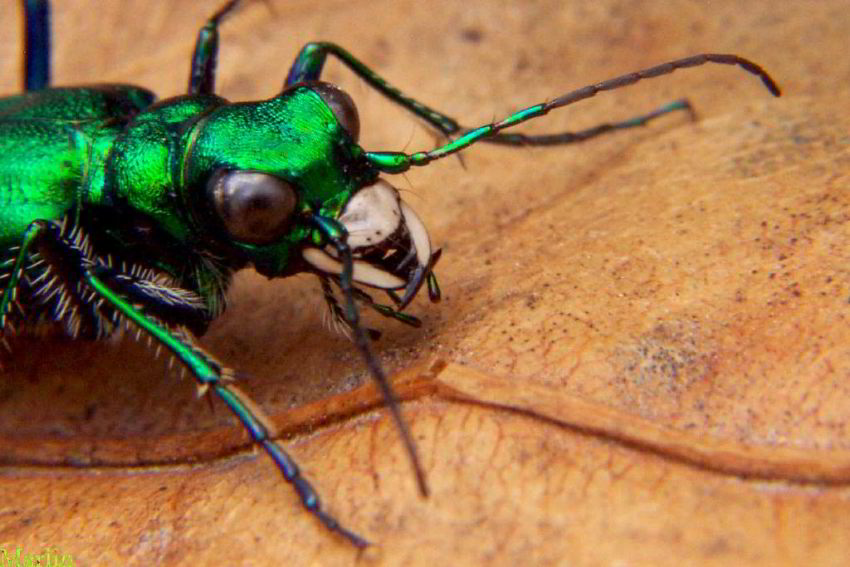Six-spotted Green Tiger Beetle – Cicindela sexguttata

The tiger beetle is an active predator and can frequently be found hunting along footpaths and walkways through deciduous or mixed woodlands.
Family Carabidae (ground beetles) / Subfamily: Cicindelinae (tiger beetles)
Male = 12mm
Since the adults overwinter in their original pupal burrows, they are some of the earliest “big” flying insects out and about come springtime.

The tiger beetles are members of the suborder Adephaga within the Order Coleoptera. Adult tiger beetles are characterized by large, prominent compound eyes and eleven-segmented, filiform antennae.
The antennae are inserted on the frons above the clypeus and below the eyes. The head, at the eyes, is wider than the pronotum
References
- Boyd, H.P. 1982. Checklist of Cicindelidae: The tiger beetles. Plexus Publishing, Inc. New Jersey.
- Knisley, C.B. and T.D. Schultz. Tiger beetles and a guide to the species of the South Atlantic states.

